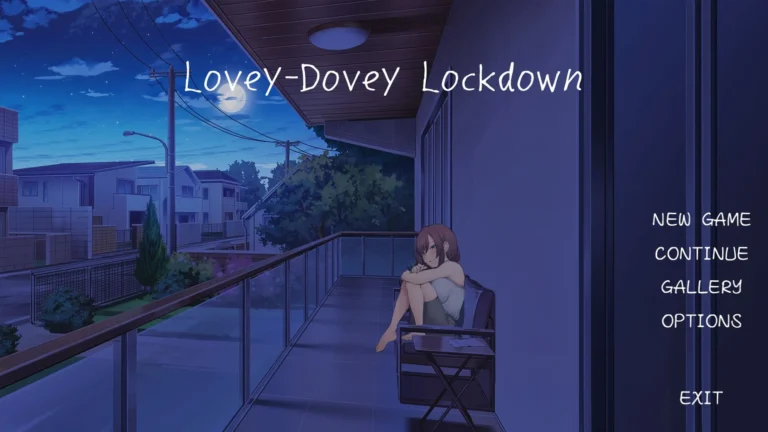
AURA: Hentai Cards
Developer: TopHouse Studio, AniCore Team

Developer: TopHouse Studio, AniCore Team

Developer: LocJaw

Developer: Bean Toast

Developer: Vonsatia

Developer: Ashen Bunny

Developer: 樹懶叫工作室,Sloth Gamer,Maker製造機

Developer: DecentMonkey

Developer: RFH Games

Developer: Naughty Algorithm

Developer: Sex n' Games

Developer: Kuggazer

Developer: Winterlook

Developer: Damaged Coda

Developer: Art Witch Studios

Developer: TLGGAMES

Developer: PhillyGames

Developer: Enyo Eerie

Developer: MagicNuts

Developer: Dimajio333

Developer: MobumGames

Developer: BlenderKnight

Developer: Gloomy Ghost

Developer: LiLith

Developer: Ceolag

Developer: PiXel Games

Developer: P_S_Y_C_H_O

Developer: Mr.Mister


Developer: RoyalCandy

Developer: peropero

Developer: Nemiegs

Developer: Leocid2

Developer: Ancho

Developer: MoonBox

Developer: Basilicata

Developer: Apulaz/Crossbow Pussycat

Developer: OrbOrigin

Developer: TastyPics

Developer: Velkami

Developer: TK8000

Developer: Mr Jet

Developer: Wizard's Kiss

Developer: Pent Panda

Developer: 1Thousand

Developer: Jonesy

Developer: DreamNow

Developer: ICCreations

Developer: Tora Productions

Developer: LikesBlondes

Developer: Play & Cum ????

Developer: Messman

Developer: Lockheart

Developer: ICSTOR

Developer: CyanCapsule

Developer: Boring Games

Developer: Luxee

Developer: FutadomWorld

Developer: TwistedScarlett60

Developer: Lunardis

Developer: Andrealphus Games
The world of interactive entertainment has seen remarkable growth in mature-themed experiences that cross cultural boundaries. From narrative-driven adventures to innovative gameplay mechanics, developers worldwide are creating content that resonates with adult audiences while reflecting diverse perspectives. This exploration reveals how global influences shape these experiences and highlights exceptional titles pushing creative boundaries.
Let’s get real: games aren’t just about jumping on mushrooms or shooting aliens anymore. Over the last decade, global gaming trends have shifted toward storytelling that mirrors the messy, complicated, human experiences we navigate daily—think love, power, and moral gray areas. But here’s the kicker: how different cultures handle these themes is like comparing a spicy kimchi stew to a classic cheeseburger. Both delicious, but wildly distinct.
Take Japan’s Mini World, for example. Instead of explicit romance mechanics, it focuses on cultural adaptation in games through subtle social bonding—like sharing virtual tea ceremonies or collaborating on intricate building projects. It’s flirting without the awkward first date vibes. Meanwhile, Western RPGs like Dragon Age toss you into steamy love scenes with elves and warriors, no holds barred. Why the difference? 🤔 Eastern design often prioritizes collective harmony, while Western narratives lean into individualism.
But it’s not just about romance. From Brazil’s favela-set dramas to Nordic noir-inspired mysteries, cross-cultural game design is reshaping what “mature” means. Developers are no longer just translating text—they’re reimagining entire story arcs to resonate locally. One indie studio even rewrote a protagonist’s backstory to reflect South African folklore after playtesters called the original plot “as relatable as a snowman in the Sahara.” ❄️🔥
Ever tried explaining Game of Thrones to your grandma? That’s what happens when games ignore cultural adaptation in games. What flies in one region might crash and burn in another. Let’s break it down:
The No Mercy controversy perfectly illustrates the pitfalls of ignoring regional sensibilities. This survival game’s hyper-violent take on tribal conflicts sparked outrage in Southeast Asia, where developers hadn’t considered historical tensions. Cue the backlash tsunami. 🌊
Pro Tip: Want to avoid becoming the next viral disaster? Hire local consultants. One studio avoided a PR nightmare by swapping a sacred symbol for a generic one—after a Māori advisor flagged it as offensive.
Academic research on virtual identities shows players crave authenticity, not stereotypes. For instance, Middle Eastern gamers often reject “desert-and-daggers” tropes, preferring stories that reflect modern urban life. The lesson? Cross-cultural game design isn’t a checkbox—it’s a conversation.
Here’s the elephant in the room: adult content regulations are a tangled mess. What’s “mature” in Germany might be banned in Australia or labeled “educational” in Sweden. 🐨 Navigating this maze requires more than luck—it demands strategy.
Let’s talk about international age ratings. Did you know Brazil’s ClassInd system evaluates “social impact” alongside violence? Meanwhile, Japan’s CERO ratings famously blur mosaics over certain body parts, while the ESRB (U.S.) focuses on descriptors like “partial nudity.”
| Region | Rating System | Unique Focus |
|---|---|---|
| Europe | PEGI | In-game purchases & discrimination |
| Japan | CERO | Sexual content & language |
| USA | ESRB | Violence intensity |
| Australia | ACB | Drug use & crime |
But regulations are only half the battle. Moderation is where things get spicy. When Second Life allowed user-generated adult content, it became a Wild West of creativity and chaos. Platforms now use AI to flag explicit material, but cultural context still trips up algorithms. A statue deemed “artistic” in Italy might get flagged as “explicit” in Saudi Arabia.
The fix? Hybrid moderation. Blend AI with local human moderators who understand slang, symbolism, and sarcasm. Oh, and always offer players customizable filters—because one person’s “steamy” is another’s “cringe.” 🙈
Love it or hate it, mature gaming isn’t fading—it’s evolving. Global gaming trends demand that developers balance creative freedom with cultural respect. Whether you’re crafting a forbidden romance in Paris or a political thriller in Nairobi, remember: the world’s your audience, but not everyone speaks the same emotional language.
So, what’s next? Keep your ear to the ground, lean into cross-cultural game design, and never underestimate the power of a good local consultant. After all, the best stories aren’t just heard—they’re felt, no matter where you hit “start.” 🕹️❤️
The global landscape of mature interactive entertainment continues to evolve through cultural exchange and technological innovation. As developers worldwide push creative boundaries while navigating complex ethical considerations, players gain access to increasingly sophisticated experiences. Explore these titles through authorized platforms that respect regional guidelines and age restrictions.
Have a favorite adult game that's not in our collection? Let us know and we might feature it!
Contact Us